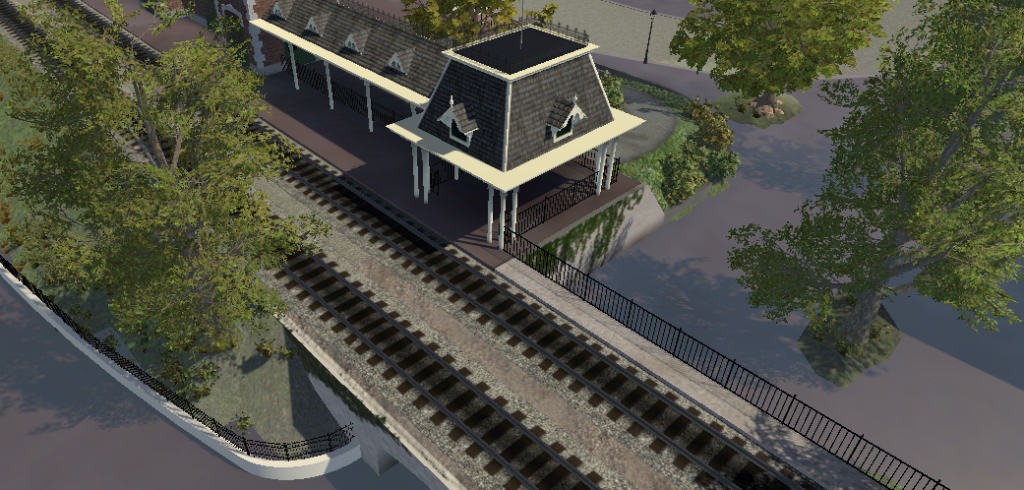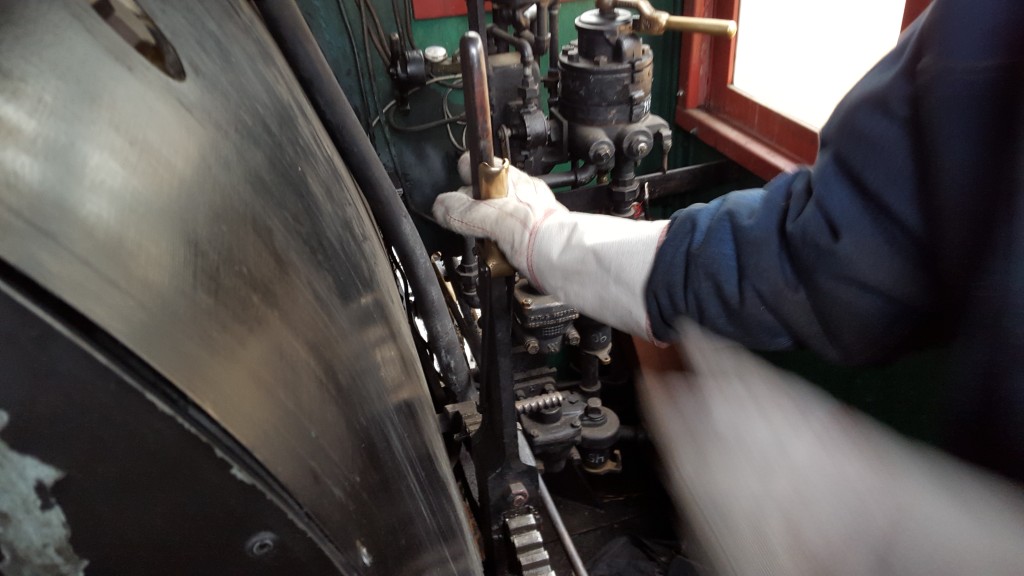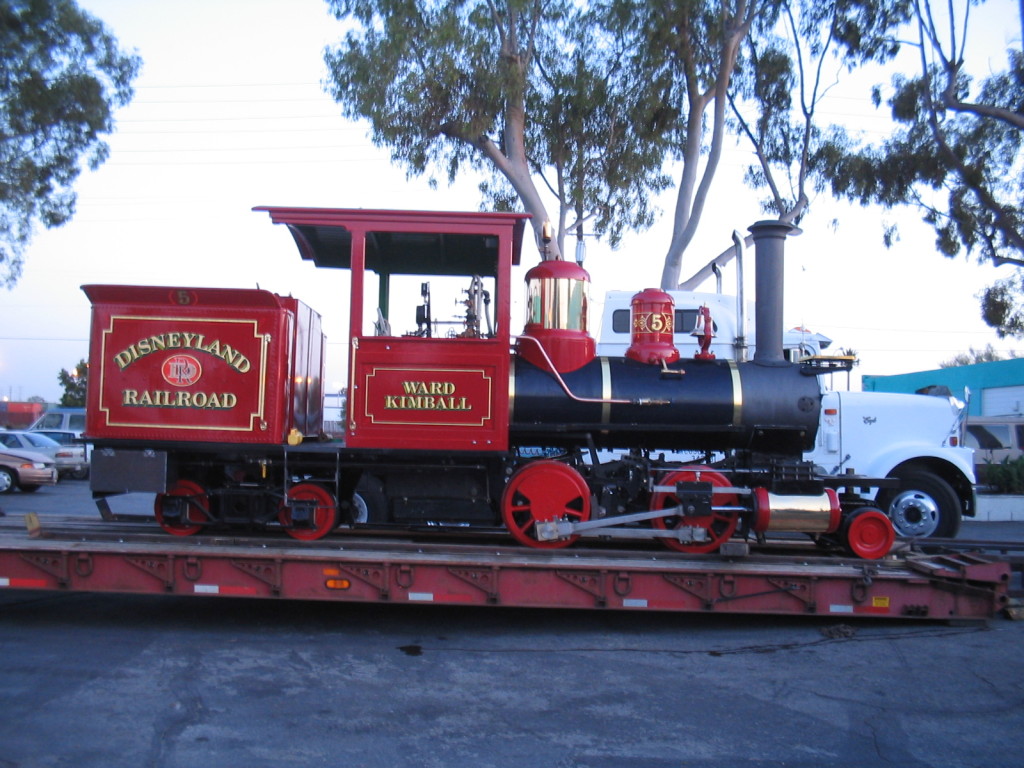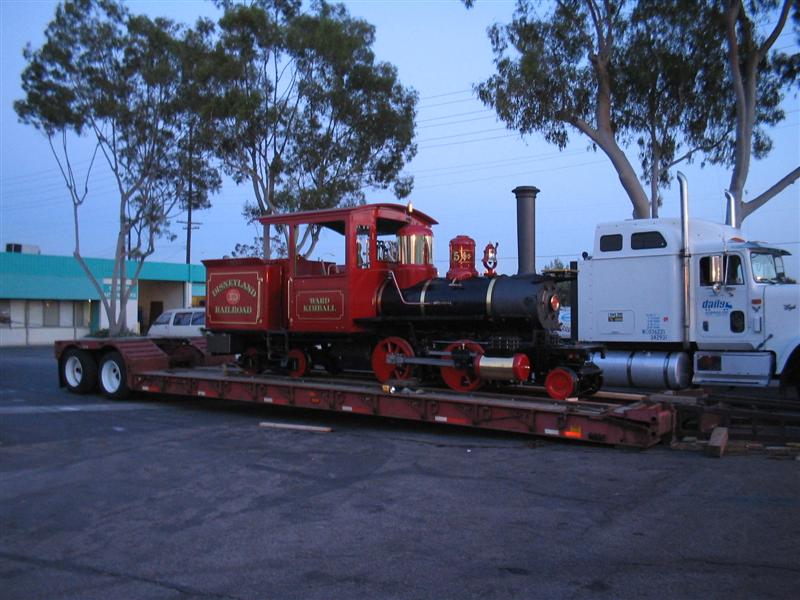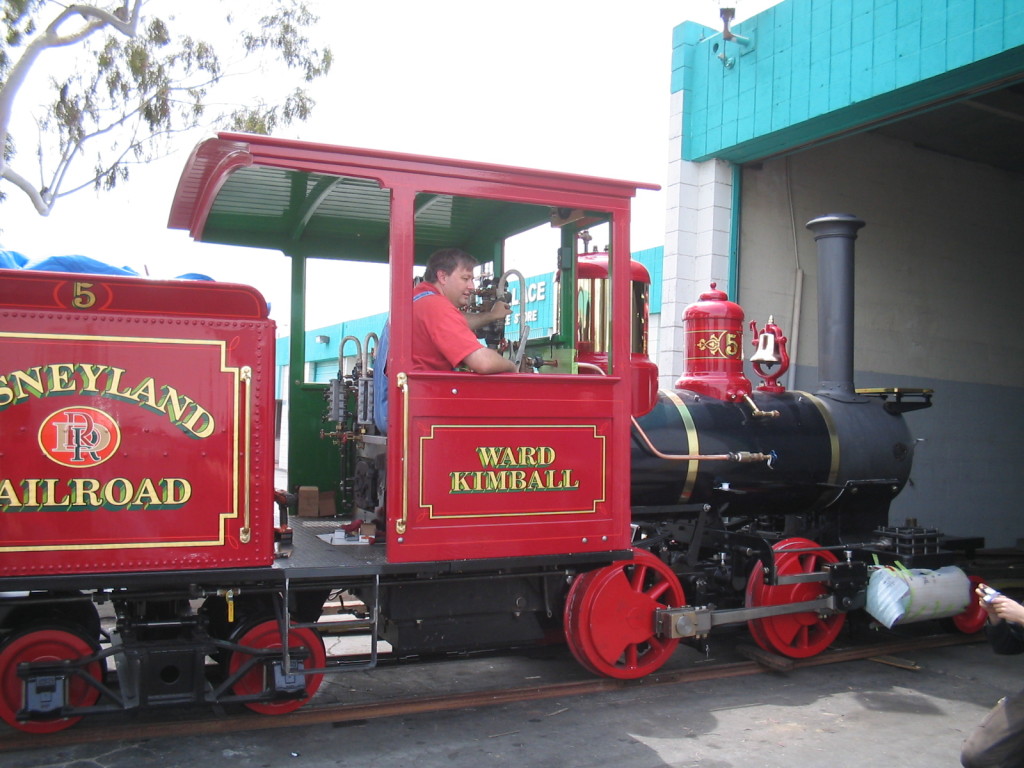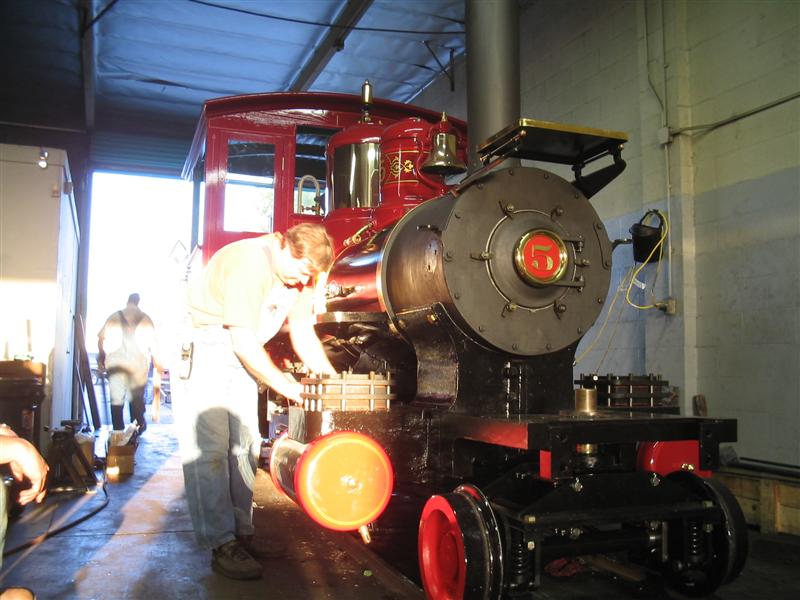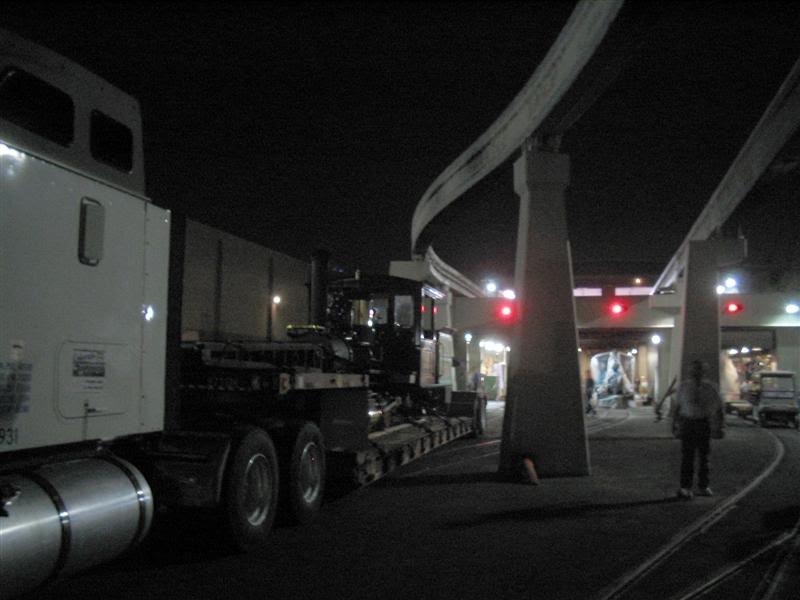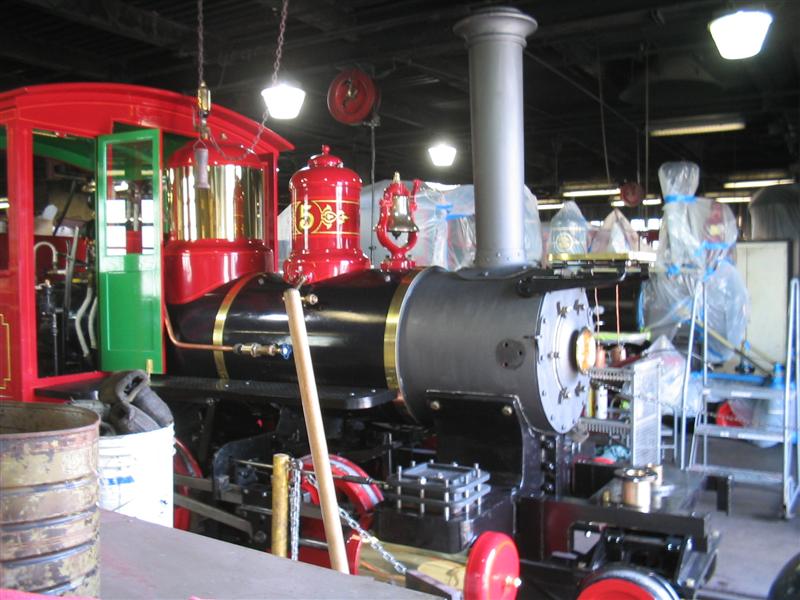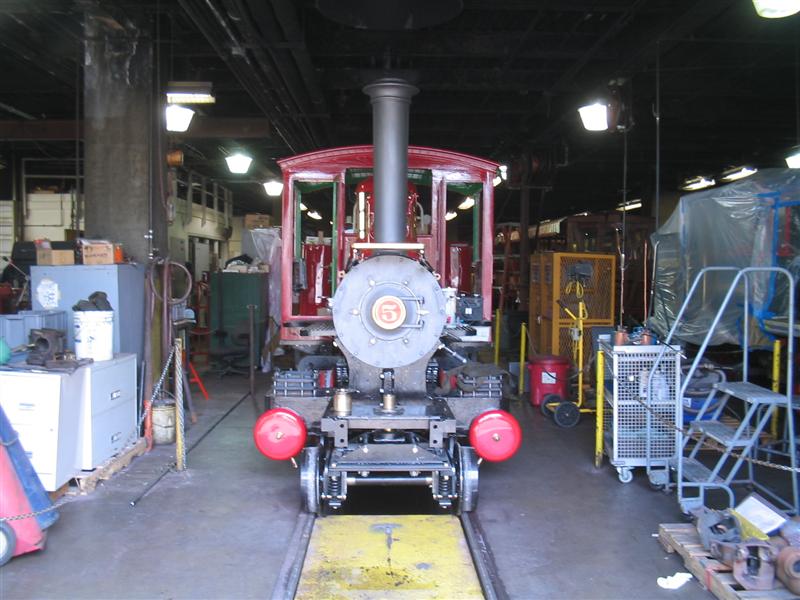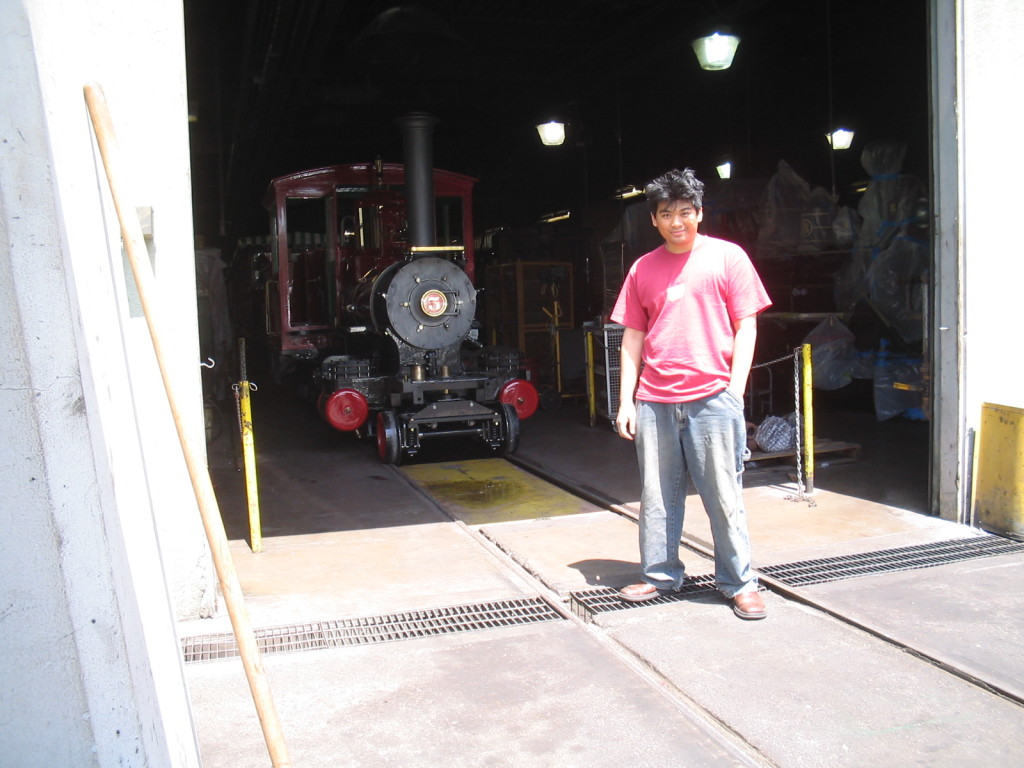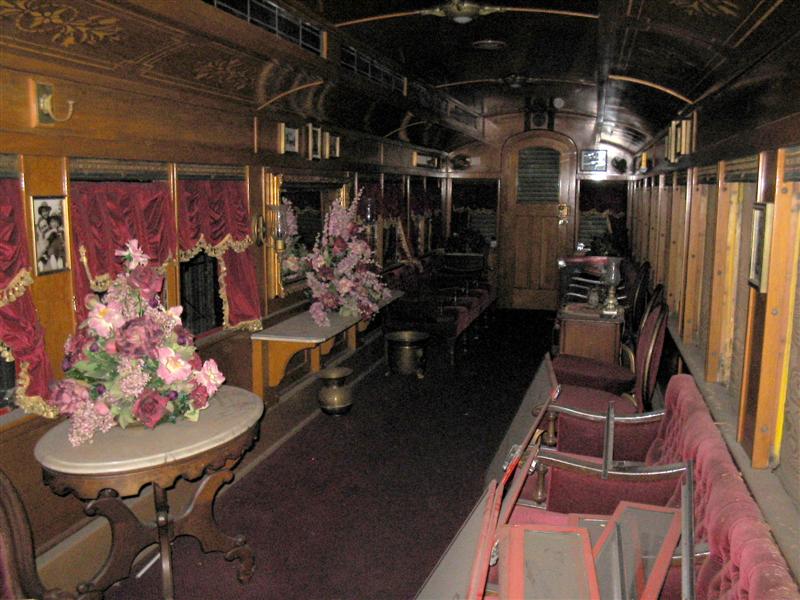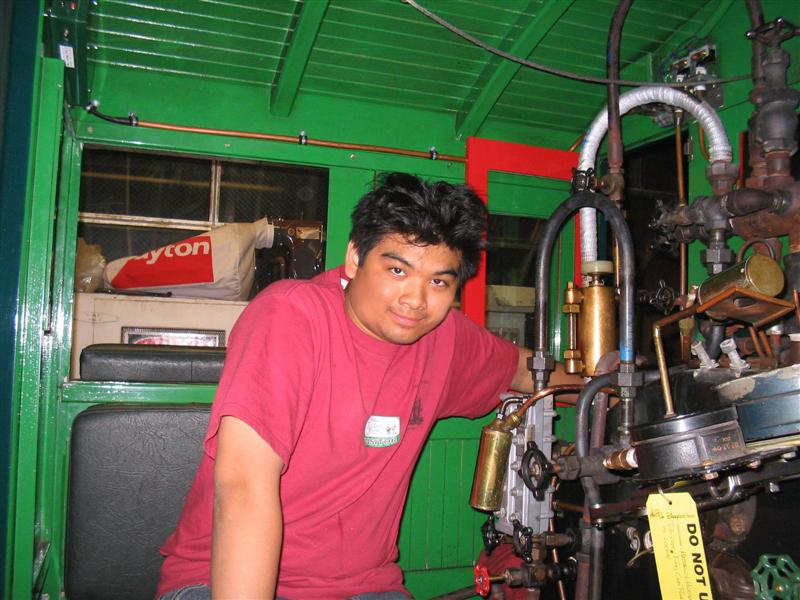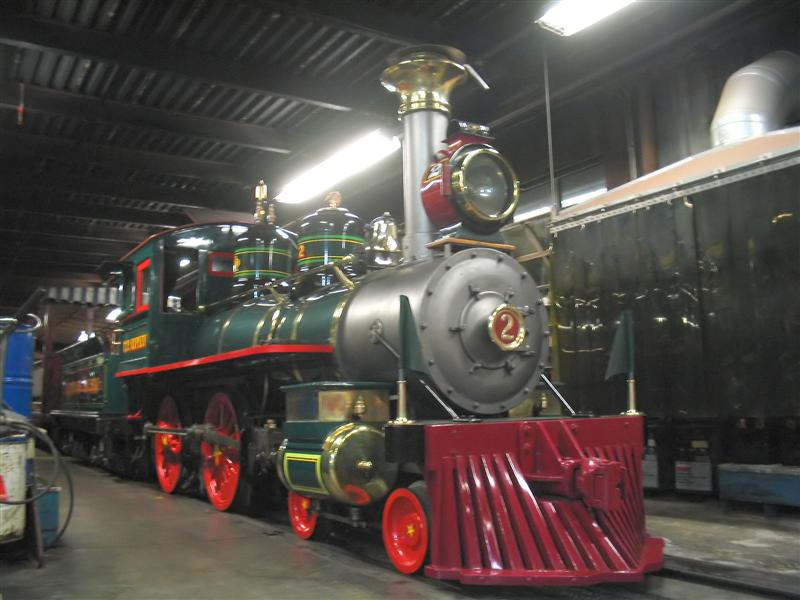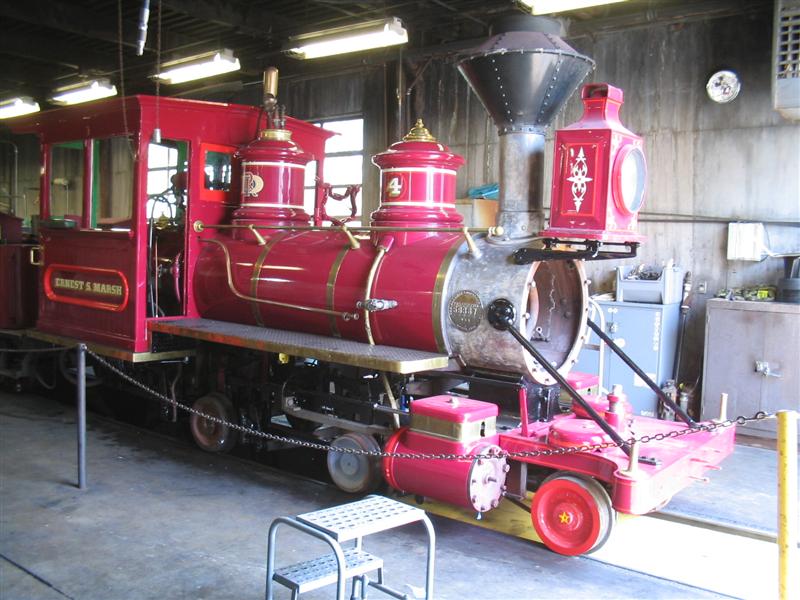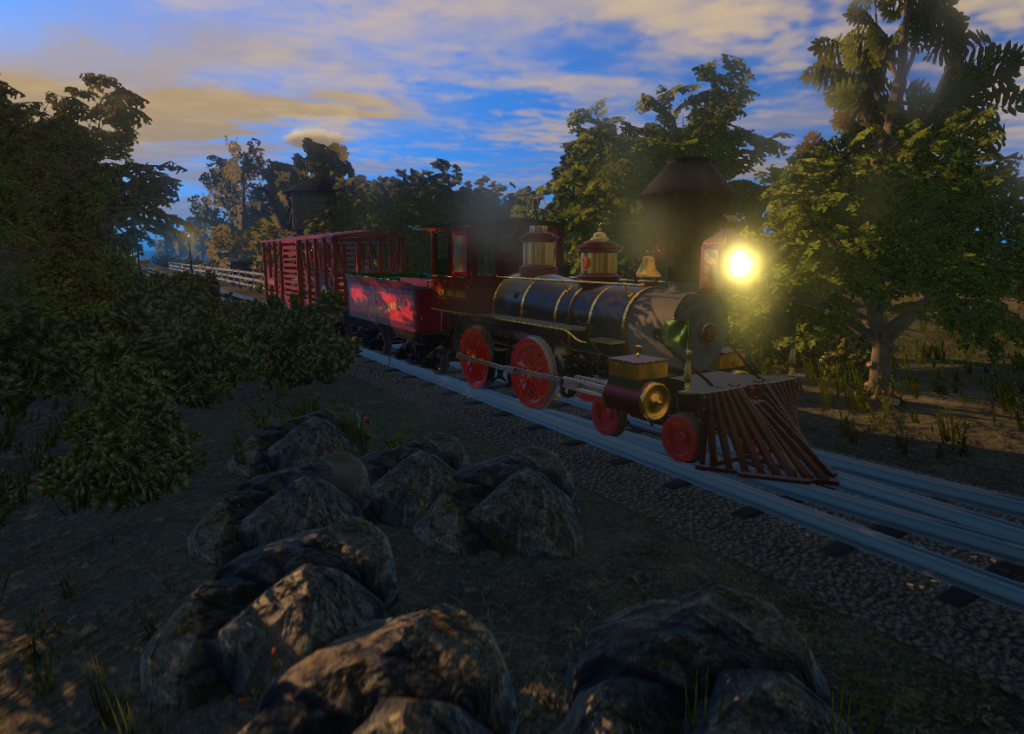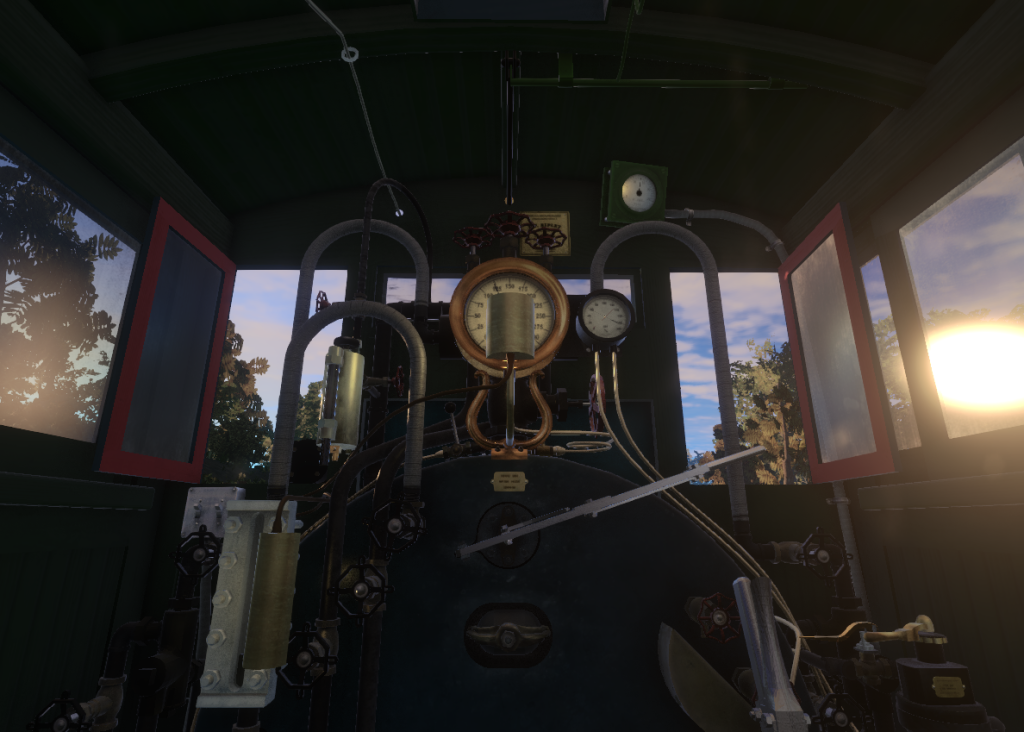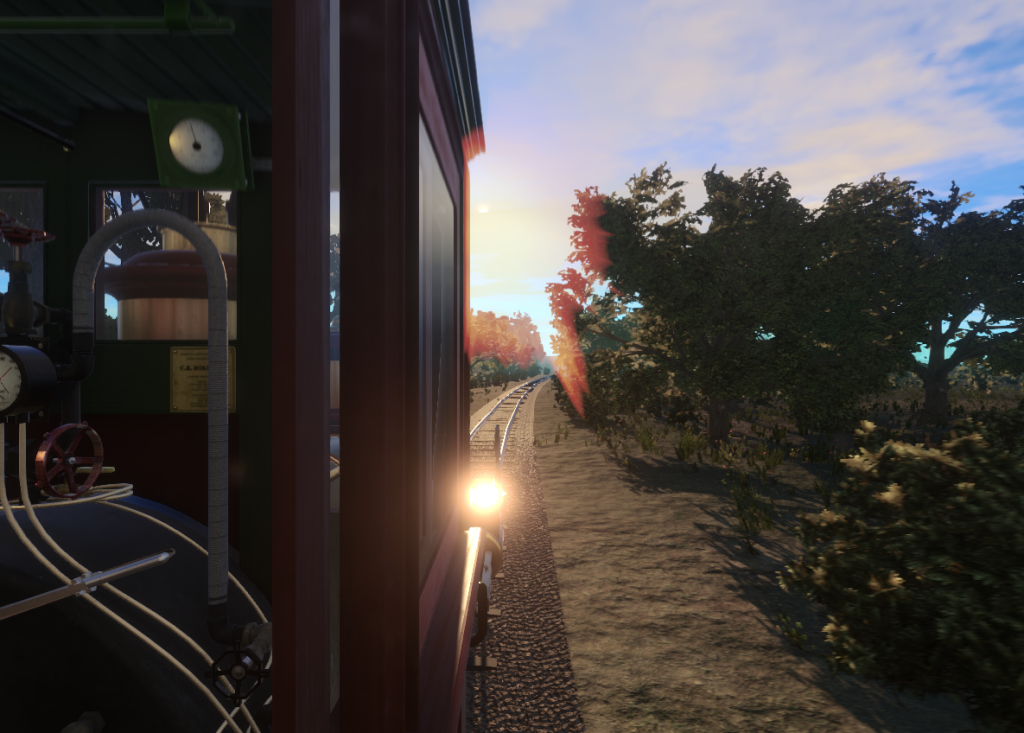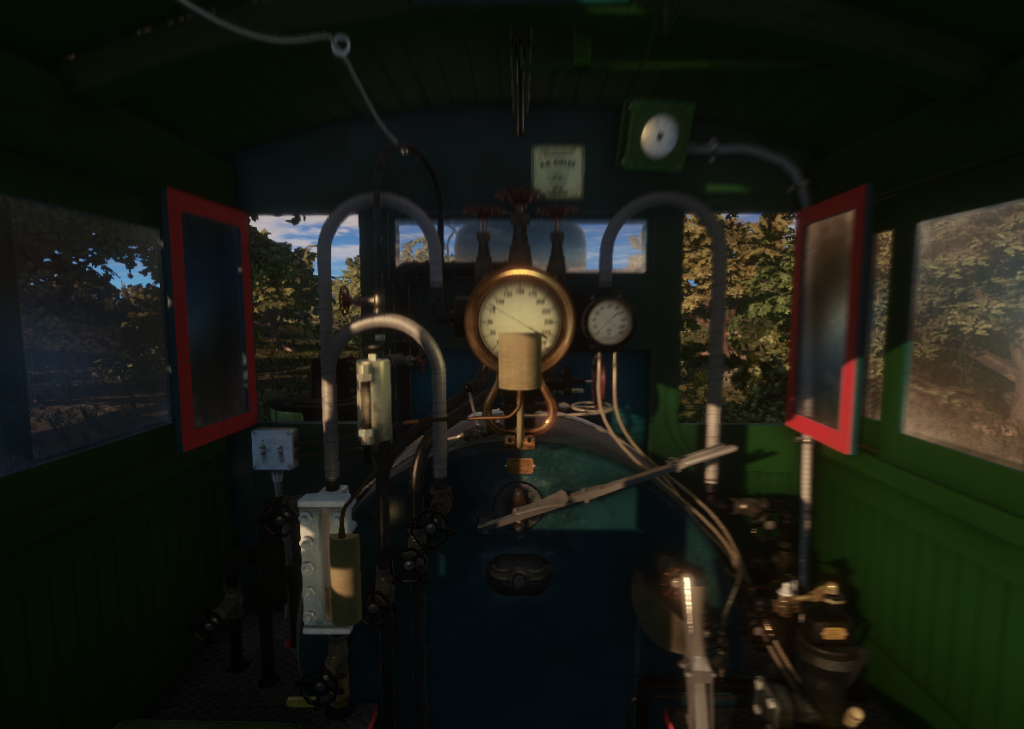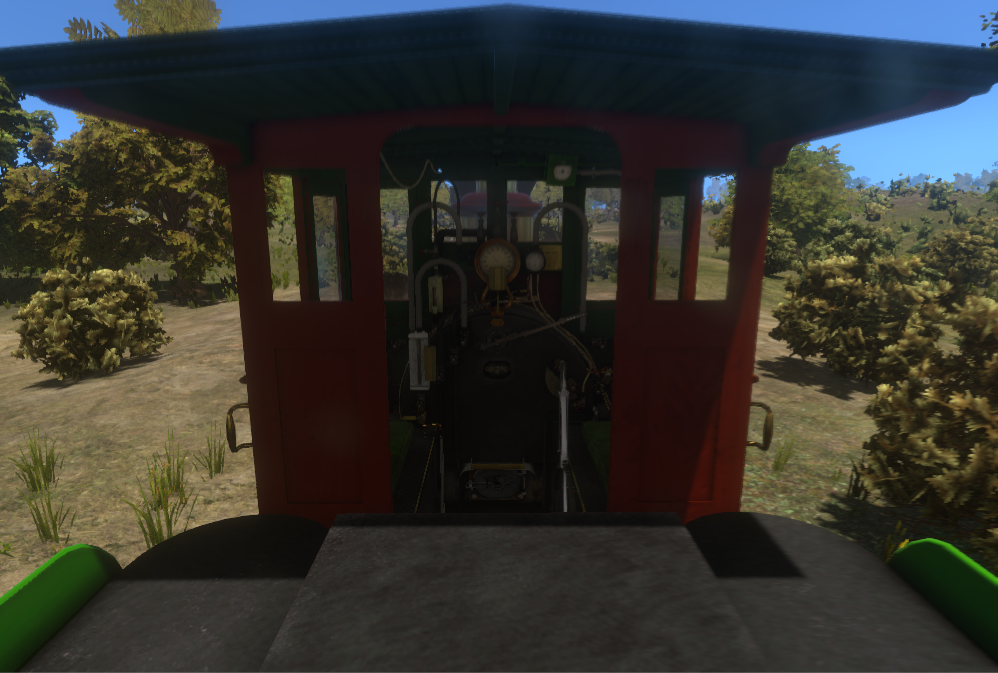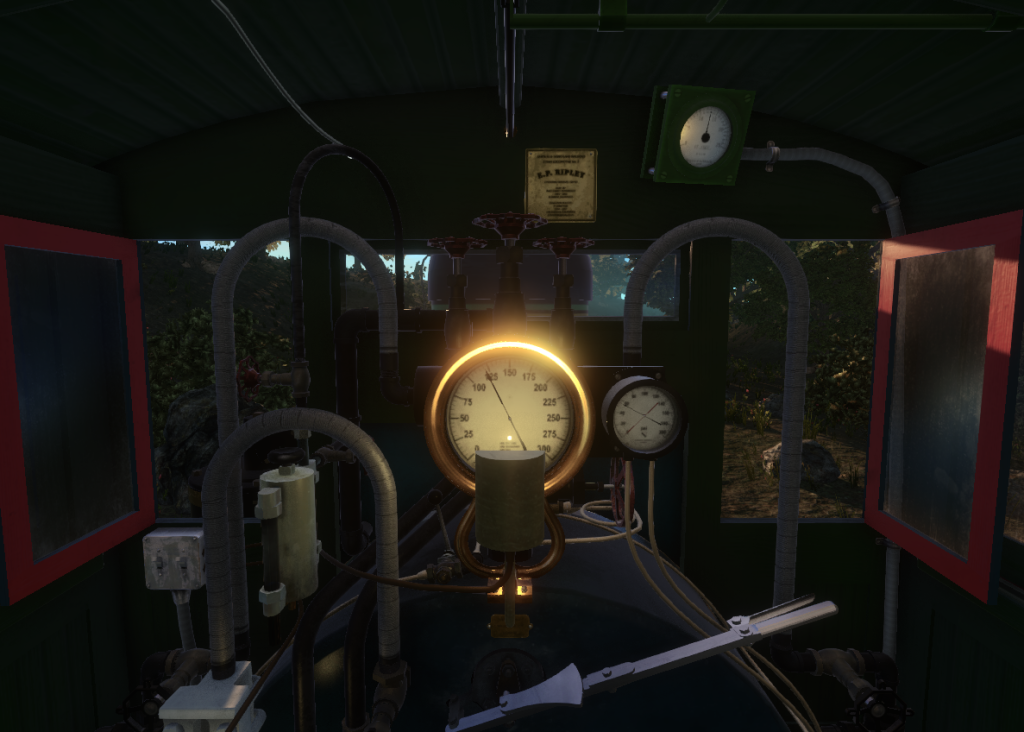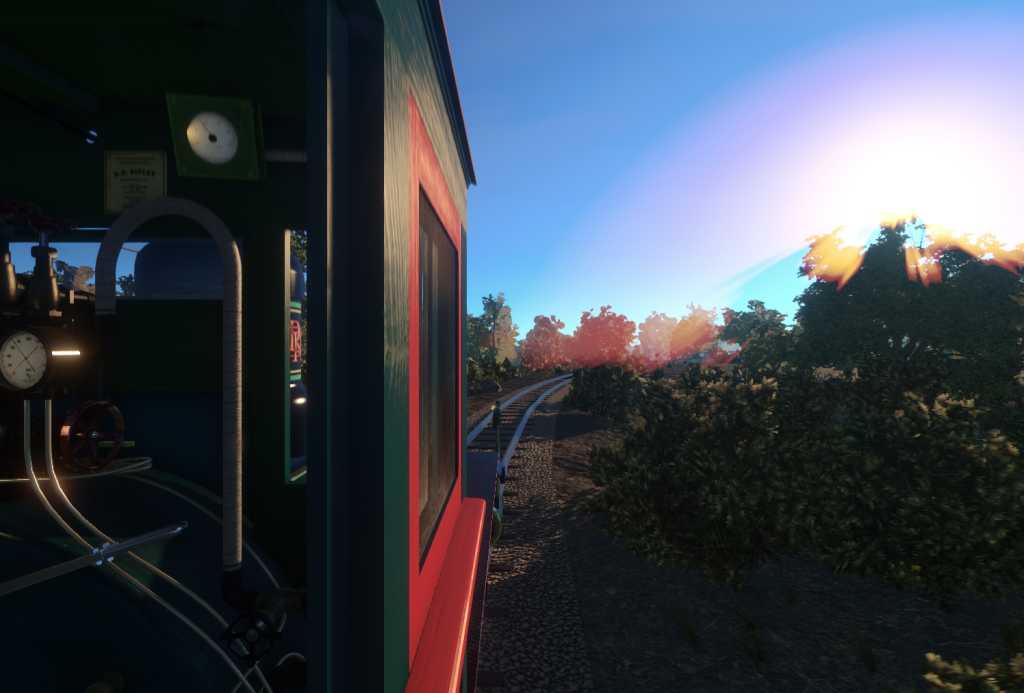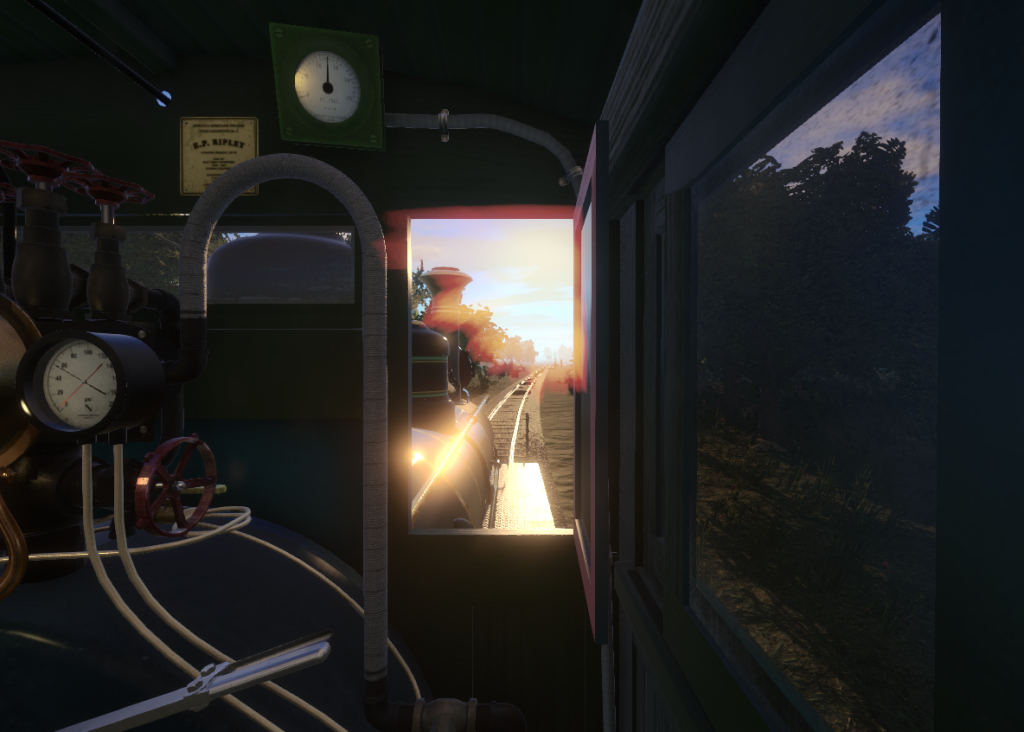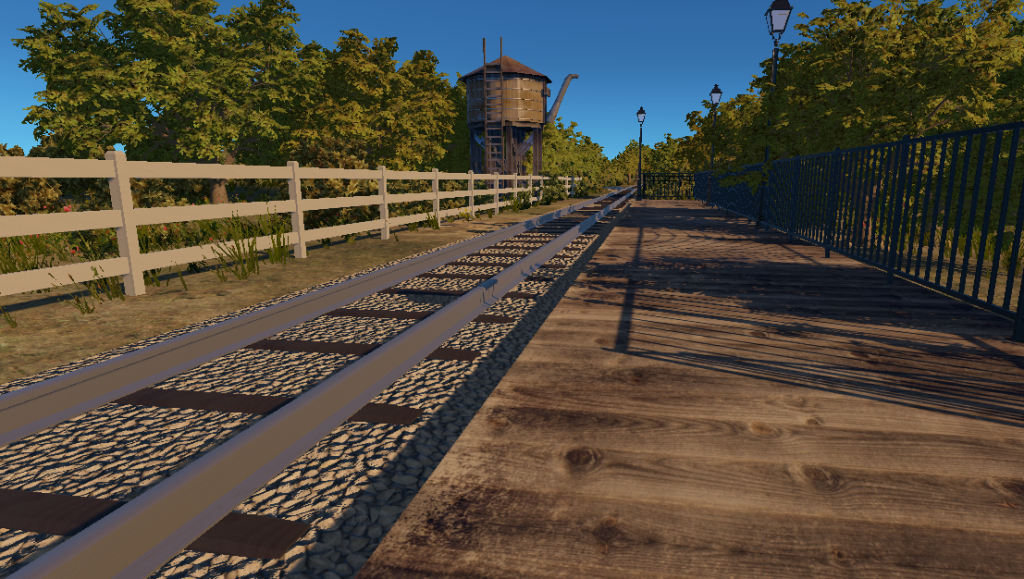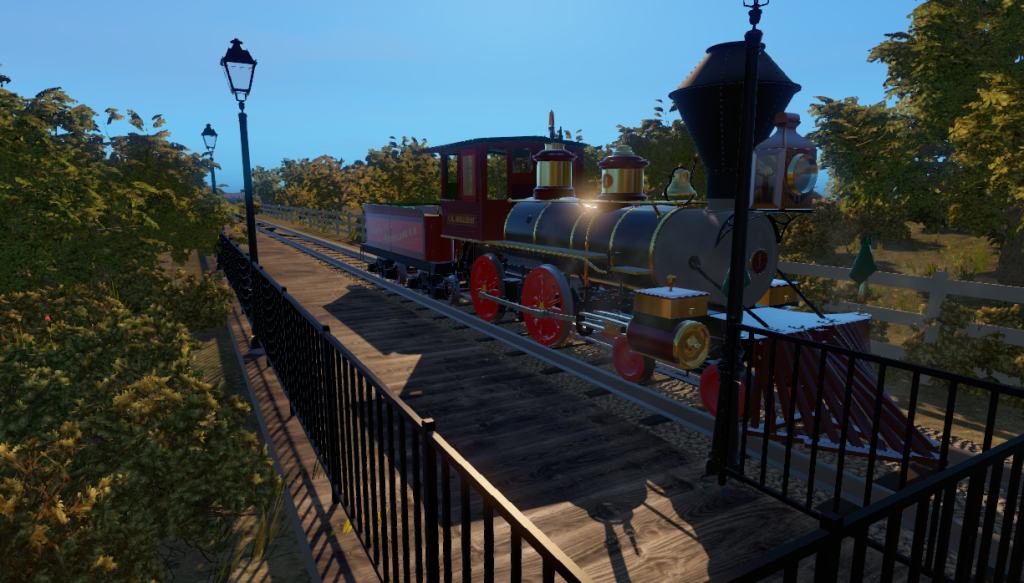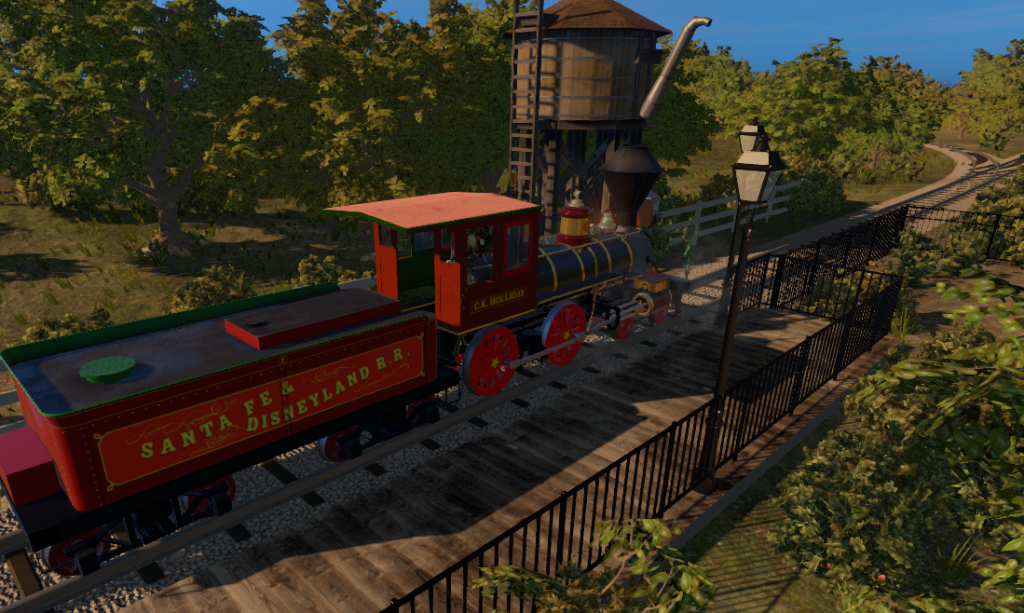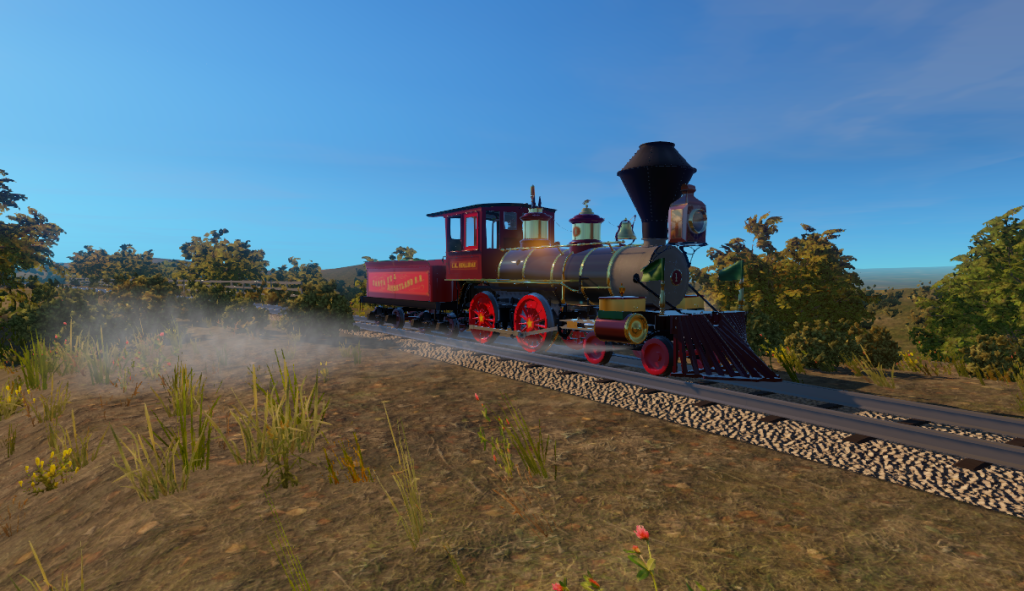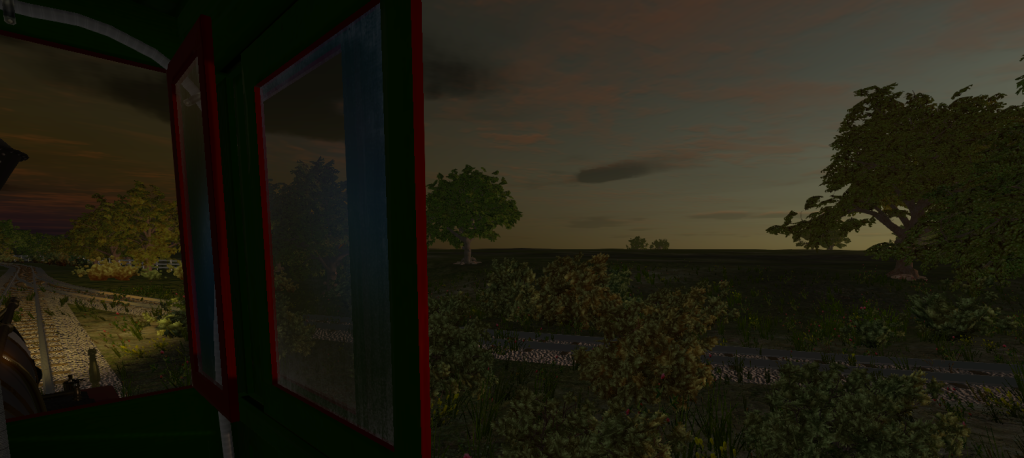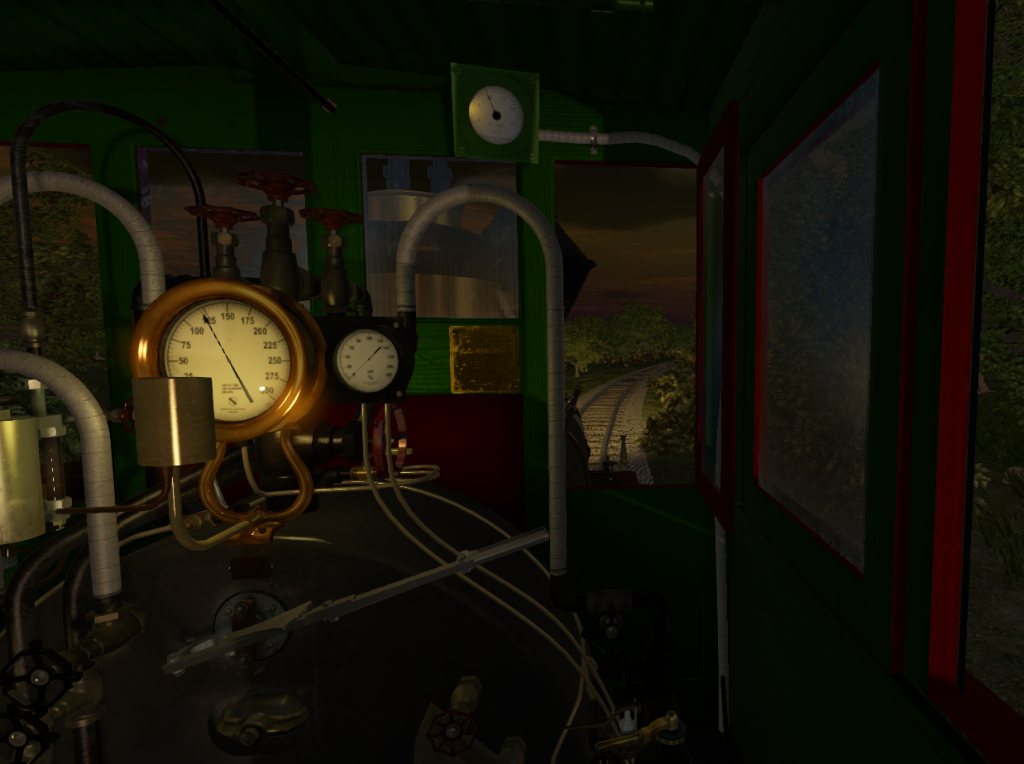In the last few updates you’ve seen the engine simulations and physics coming along—really close to getting polished. So now I’m moving on to work on the scenery. You’ve seen plenty of my fictional testing ranch (which I plan on expanding further still!) but there will also be a Disneyland layout of sort.
Through out my research to recreate the old Disneyland tracks, I learn that it’s pretty difficult to exactly recreate the park, because the park changed so often! A picture from early 1956 can be drastically be different from a photo taken in middle or late in the same year! More on this later.
So far, there’s nothing exciting in the park to show yet, but I’ll at least leave you with these teaser images. I took the first picture to specifically show off the new tracks rendering…
…notice the much closer (and more realistic) track ties spacing, the oil and grease stains on the ties and gravel, and the natural fringe of the gravel edges. This was taken at the bend around the Rivers of America, looking back.
Another teaser picture. I’m sure you’ll recognize this structure right away…
Yes, notice on the bridge: the dual tracks of the old SF&D days! You’ll be able to operate the switches to run on either the siding or the pass-by tracks at both stations. Check out the landscaping around the stations. The foliage really gives a sense of scale, and the point of view from the cab pulling into Main Street Station is quite breathtaking… but I’ll save that for another day!

